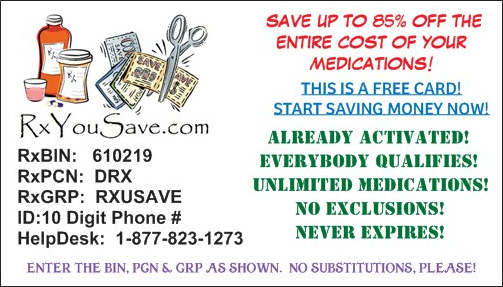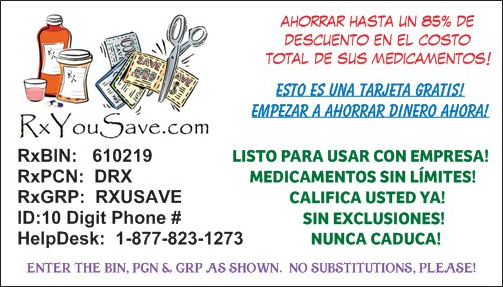Contact Us In The Partner With Us >> About Us Section!
Extraneal Medication Guide Information

Read the Medication Guide that comes with Extraneal before you start taking it and each time you get a refill. There may be new information. This Medication Guide does not take the place of talking with your doctor about your medical condition or treatment. Talk to your doctor if you have any questions about Extraneal.
Pronunciation: (X-tra-neel)
|
Availability:
|
What is the most important information I should know about this medication?
This medication (icodextrin) contains maltose, which can react with certain blood glucose (blood sugar) monitors and test strips.
- Using this medication may cause a false (incorrect) high blood sugar reading or may hide a blood sugar reading that is actually very low. This can happen if you use a glucose monitor or test strips with glucose dehydrogenase pyrroloquinolinequinone (GDH-PQQ), glucose-dye-oxidoreductase (GDO), or glucose dehydrogenase flavin-adenine dinucleotide (GDH-FAD) at any time during treatment or within approximately 2 weeks (14 days) after you stop treatment with this medication. This kind of false reading means that your blood sugar may really be too low even though the test says that it is normal or high. This can lead to dangerous side effects.
- You could accidentally wait too long to treat your low blood sugar if you have low blood sugar and do not use the right kind of monitor and test strips.
- You could accidentally take too much insulin if you have a false high blood sugar reading.
- Taking too much insulin or waiting too long to treat low blood sugar can cause you to have serious reactions including: loss of consciousness (passing out), coma, permanent neurological problems, or death.
- If you have high blood sugar or diabetes and monitor your blood glucose, you must use a specific glucose monitor and test strips during treatment with this medication and up to 2 weeks after stopping this medication.
- Do not use blood glucose monitors or test strips that use glucose dehydrogenase pyrroloquinolinequinone (GDH-PQQ) or glucose-dye-oxidoreductase (GDO). Some blood glucose monitors or test strips that use glucose dehydrogenase flavin-adenine dinucleotide (GDH-FAD) also must not be used.
- You, or your nurse or doctor should call the manufacturer of your blood glucose monitor and test strips to make sure that the maltose in this medication (icodextrin) will not affect your blood sugar test results.
- If you are hospitalized or go to an emergency room, tell the hospital staff that you use this medication so that they use the right kind of blood sugar monitor and test strips for you.
- You can get information on glucose monitor and test strip methods from their manufacturers. For a list of toll free numbers for glucose monitor and test strip manufacturers, you can ask your doctor or go to www.glucosesafety.com.
What is EXTRANEAL?
This medication is a prescription peritoneal dialysis solution. This medication draws fluid and wastes from your bloodstream into your peritoneal cavity (the space inside your abdomen). The fluids and wastes are removed from your body when the EXTRANEAL solution is drained. This medication is for the long dwell exchange (8 hours to 16 hours) in peritoneal dialysis. The long dwell is the exchange that lasts 8 hours or more:
- •the nighttime exchange if you are on continuous ambulatory peritoneal dialysis (CAPD)
- •the daytime exchange if you are using a cycler
This medication is not for intravenous injection (injection into a vein). It is not known if this medication is safe and works in children.
Who should not use this medication?
Do not use this medication if:
- You have a glycogen storage disease
- You do not tolerate maltose or isomaltose
- You have severe lactic acidosis
- You are allergic to cornstarch or icodextrin
What should I tell my doctor before using EXTRANEAL?
This medication may not be right for you. Before using this medication, tell your doctor
about all your medical conditions, including if you:
- have a condition that affects your nutrition, or you are not able to eat well
- have a lung or breathing problem
- have low potassium levels in your blood
- have high calcium levels in your blood
- have low magnesium levels in your blood
- have had recent aortic graft surgery
- have had stomach area (abdomen):
- surgery in the past 30 days
- tumors
- open wounds
- hernia
- infection
- have certain bowel conditions, including:
- a colostomy or ileostomy
- frequent episodes of diverticulitis
- inflammatory bowel disease
- are pregnant or plan to become pregnant. It is not known if this medication will harm your unborn baby.
- are breast-feeding. It is not known if this medication passes into your breast milk.
Tell your doctor about all the medicines you take, including prescription and nonprescription medicines, vitamins, and herbal supplements. The dose of certain medicines may need to be changed when you use this medication. Especially tell your doctor if you take:
- insulin
- blood pressure medicine
- digoxin (Lanoxicaps, Lanoxin, Lanoxin Pediatric)
Know the medicines you take. Keep a list of them and show your doctor and pharmacist
when you get a new medicine.
How should I use EXTRANEAL?
- Use EXTRANEAL exactly as prescribed by your doctor.
- Use EXTRANEAL only for your long dwell exchange, and not more than 1 exchange
- In 24 hours. Follow the steps that you learned in your peritoneal dialysis training to do your EXTRANEAL exchange.
- To open EXTRANEAL, tear the overwrap at the slit and remove the bag of solution.
- Before using this medication, always check to make sure:
- The bag does not leak. A small amount of moisture inside the overwrap is normal. Firmly squeeze the bag to check for small leaks.
- The expiration date has not passed. Do not use this medication after the expiration date shown on the carton and product label.
- Look at the bag to make sure the solution is clear and does not contain particles. Do not use a bag of this medication if it is cloudy or contains particles.
- Before using this medication, you may warm the bag in the overpouch, to make it more comfortable. Only use dry heat, such as a heating pad, to warm the EXTRANEAL solution to 98.6°F (37°C).
- Do not microwave this medication. You can damage the solution if it gets hotter than 104°F (40°C).
- To avoid an increased risk of infection, do not put this medication in water to heat the bag.
- To prevent a serious infection, you must:
- Clean (disinfect) your work surface (where you set your PD supplies) before starting your exchange.
- Use the technique that you were shown in your peritoneal dialysis training to prevent contamination with bacteria (aseptic technique), when making connections.
- If you use a manual method of peritoneal dialysis (CAPD), infuse this medication over 10 to 20 minutes at a rate that is comfortable for you.
- When you drain the fluid after the dwell, check the drained fluid for cloudiness or fibrin. Fibrin looks like clumps or stringy material in the drained solution. Cloudy, drained fluid or fibrin may mean that you have an infection. Call your doctor if your drained fluid is cloudy or contains fibrin.
- Regularly check and write down your fluid balance and weight to avoid having too much or too little fluid in your body (over-hydration or dehydration). This can help lessen the chance of serious side effects, such as heart failure and shock.
- Call your dialysis center or doctor if you need more help or have any questions.
- If you infuse too much EXTRANEAL, your stomach area (abdomen) may look large, and you may feel “full” or feel short of breath. If this happens, drain the solution from your peritoneal cavity.
- Talk to your doctor before adding any other medicines to this medication.
- Throw away any unused EXTRANEAL. Do not use your solution more than one time.
What are possible side effects of this medication?
This medication can cause serious side effects, including:
- •See “What is the most important information I should know about this medication?”
- •Serious allergic reactions. Tell your doctor or get medical help right away if you get any of these symptoms of a serious allergic reaction during treatment with this medication:
- •swelling of your face, eyes, lips, tongue or mouth
- •trouble swallowing or breathing
- •skin rash, hives, sores in your mouth, on your eyelids, or in your eyes
- •your skin blisters and peels
- Common side effects of this medication include:
- •infection in the peritoneal cavity (peritonitis). Peritonitis is common in people on peritoneal dialysis. Tell your doctor right away if you have any pain, redness, fever, or cloudy drained fluid.
- •high blood pressure • nausea
- •headache
- • swelling
- •stomach area (abdomen) pain
- • chest pain
- •increased cough
- • upset stomach
- •flu-like symptoms
- • high blood sugar
These are not all the possible side effects of this medication. For more information, ask your doctor or dialysis center. Call your doctor for medical advice about side effects. You may report side effects to FDA at 1800-FDA-1088.
How should I store this medication?
- Store this medication at 68°F to 77°F (20° to 25°C).
- Keep this medication in the moisture barrier overpouch in the carton until ready to use.
- Do not warm this medication above 104°F (40°C).
- Do not freeze this medication.
General information about this medication
Medicines are sometimes prescribed for purposes other than those listed in a Medication Guide. Do not use this medication for a condition for which it was not prescribed. Do not give this medication to other people, even if they have the same symptoms you have. It may harm them. This Medication Guide summarizes the most important information about this medication. If you would like more information, talk with your doctor. You can ask your doctor for information about this medication that is written for healthcare professionals. You can also find out more about this medication by calling your doctor or visiting the website www.renalinfo.com.
Need Help Paying For this Medication? Right Click An Image Below & Download Your Copy Of The RxYouSave Free Prescription Discount Card & Save Up To 85% Off The Entire Cost Of Your Prescription!
 |
 |
Click Here To Go To The Top Of The Page

